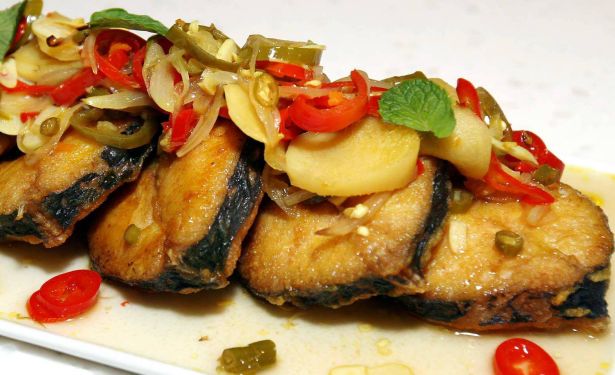GERALD the wine snob was strolling the streets one day when he was grazed by a presumptuous, wine-laden delivery truck. It sped off so quickly that Gerald didn’t see the licence plate number; as the truck swerved around the corner, though, several bottles fell out and smashed on the road.
When Gerald reported the incident at the nearest police station, the duty sergeant didn’t know how he was going to find the truck. “So you saw nothing at all?” the policeman asked Gerald. “No, but I did get a whiff of the bouquet of the wine.” “The … what?” asked the perplexed Plod. “Bouquet, my dear man – the aroma of the wine that splashed all over the road,” Gerald shot back. “Look for a truck carrying some Chateau Lafite-Rothschild and you will find the hit-and-run driver!” cried Gerald smugly.
Okay, perhaps it’s not such a good idea to aim for Gerald’s height of pretension…. But when the occasion arises, knowing a bit about wine will certainly do wonders for your reputation. In this and the following three instalments of Uncorked, I will share some bluffer’s tips to help you become a truly first-rate wine pretender. Who knows, you might be so good, you’ll end up becoming a true wine connoisseur!
Tip 1 – Faking it at the tasting: Looking the part is half the battle won. Look around the next time you are at a wine tasting event: everyone holds his or her glass by pinching the stem between the index and forefinger. Compare that with how non-aficionados at parties hold wine glasses: more often than not, they will cradle the bowl of the wine glass.
That’s a no-no. Firstly, it leaves unsightly fingerprints on the crystal. More critically, hands warm wine that is supposed to be enjoyed at an European room temperature of about 18°C (red wines); cool at 10°C (white wines), and cold at 7°C (sparkling wines).
There is a third reason why wine aficionados hold their glasses by the stem. By doing so, they are able to swirl the wine around to aerate the wine so that the aromas in the glass develop. Much about wine appreciation is about smelling the wines to enjoy its aromas or bouquet before tasting it and finally swallowing the wine.
Tip 2 – Holding it together: Now that you know how to hold a wine glass, you have to be able to handle it. Never try something unfamiliar in public, though. At home, practice swirling the wine in a large glass. Fill a glass a third way up and begin by swirling it with its base on the table, taking care no wine spills out. When you get better, you can do it in the air while standing up.
When you get very good at that, you can even hold the wine glass by its foot (base) with your thumb and index finger like you are holding a baton. Wine snobs like to hold the glass this way to distinguish themselves from the aficionados!
And here are notes on one wine producer that you can discuss knowledgeably: Abruzzo is a central Italian wine region that faces the Adriatic Sea. Red wines are made there from Montepulciano grapes (not to be confused with the Montepulciano region of Tuscany); white wines are made from Trebbiano grapes.
I recently tasted the wines of one of a small handful of the producers, who led the way towards quality wines in the Abruzzo.
Originally, Abruzzo vines were trained into a pergola – which produces lots of grapes that are easy to pick, but at the expense of quality wines. Gianni Masciarelli was one of the pioneers of the horizontal French guyot and cordon training system in the Abruzzo region and of harvesting lower yields from each vine – resulting in quality wines.
Masciarelli’s lime-pineapple scented Trebbiano d’Abruzzo was unforgettable because it was nicely balanced with a crisp green apple finish.The producer’s flagship wine, the Villa Gemma, Montepulciano d’Abruzzo DOC, 2004, was intense and complex with the perfume of ripe cherries, dark fruit, chocolate and a hint of animal and minerals. Highly recommended!
Other wines produced include a Montepulciano d’Abruzzo, a Cerasuolo d’Abruzzo (rich pink wine), a Rosato (standard pink), special selected vineyard blend called Marina Cvetic, a Merlot and a Cabernet. (Distributor in Malaysia: Tong Woh Enterprise Sdn Bhd; 03-7956 9300 or e-mail enquiry@tweinc.com.my.)
Edwin Soon is a qualified oenologist and has run wine shops and worked as a winemaker in various countries. He now writes and teaches about wine around Asia.




